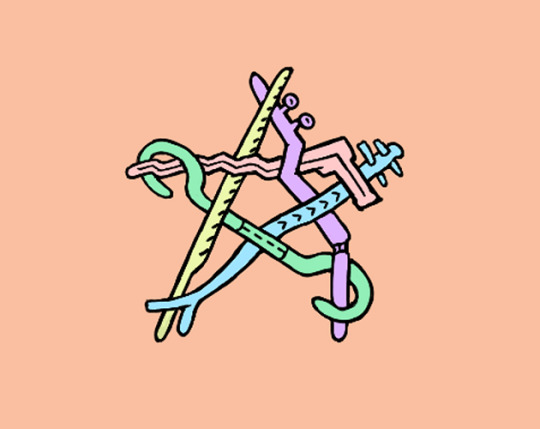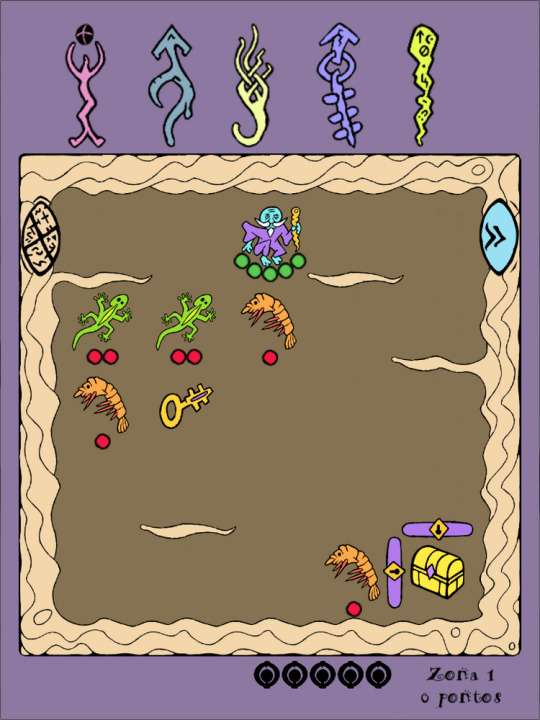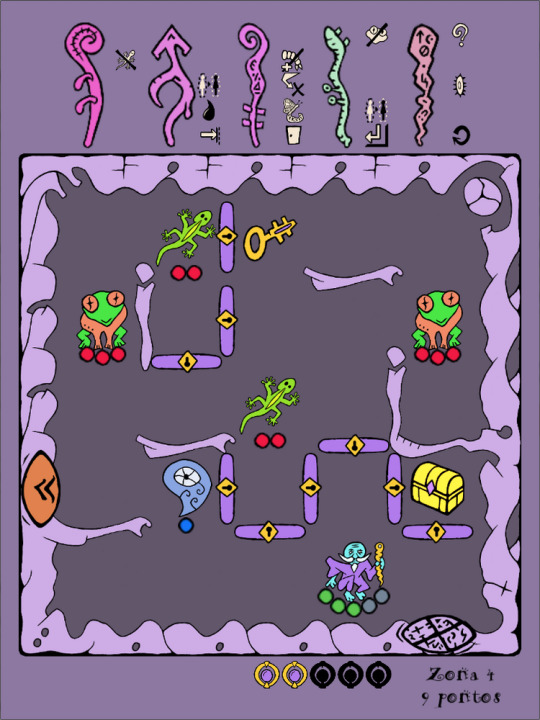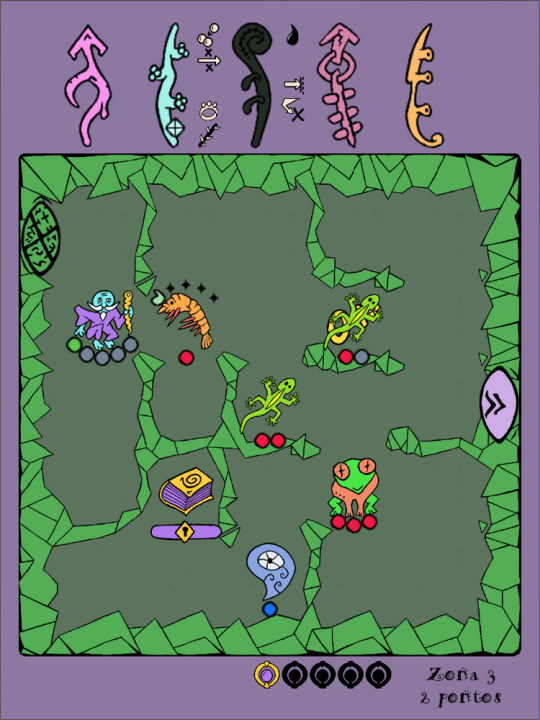#smestorp
Explore tagged Tumblr posts
Photo




Cinco Paus (iOS)
Developed/Published by: smestorp Released: 12/02/2015 Completed: n/a Completion: 33 games, 632 points. Trophies / Achievements: n/a
So, Cinco Paus, then. It’s a game I’ve resisted playing for ages and ages largely because I wasn’t that into Michael Brough’s previous games (I somewhat liked 868-Hack, but I didn’t find it very compelling somehow?) but we got to a point where Metanet’s Raigan Burns just bought it for me so I decided to give it the old college try.
Cinco Paus is incredible. It’s also frustrating, unfair, probably taking the piss when it comes to time investment, and yet something that I managed to lose more time, more intensely on, than any game I’ve played in ages. Like legitimately losing 14 hours to it within the first three days.
It’s an easily misunderstood game, so I’m going to outline (first of all) that you absolutely should play it, unless you’re easily addicted to rogue-likes, in which case you probably shouldn’t. Basically, it goes like this:
You’re a wizard.
You have five wands that you don’t know the behaviors of; each wand does five things. Your goal is to compete FIFTY sets of five levels, which are five by five, by getting to the exit on each level.
Wands do a variety of things. You learn by shooting them (drag them to your wizard and point them in a direction; you can’t use them directly against a wall.) They don’t tell you what the thing they do is unless they do that thing so you can’t tell if it hurts an enemy unless you hit an enemy. But you also can’t tell if it does something good that requires it not to hit an enemy (the “buried treasure” ability) unless it doesn’t hit an enemy!
All the explanations are in Portuguese, so ignore them and just look them up here.
You can pick up items.
Books teach you one thing one wand does.
Gems. Collect five gems and you can unlock an artifact (you can have five) which do one (powerful) thing.
Keys. Collect five keys, which you can only do via wand shenanigans (there’s one key per level, and that always gets used up to unlock doors) and you can find a secret level (a hidden door on a wall that doesn’t contain an exit/entrance already) which will upgrade an artifact. Each artifact can have five upgrades. They’re extremely good.
Potions. Heal you one point. This is valuable, but if you’re at full health you can ignore or transform these.
Treasure. It’s just points! If you’re going for score, these are high risk because they give you nothing else. Transform ‘em early if you can, I say.
After a set of five levels, everything resets except for your gems, keys, score and artifacts. So you “keep” some progress.
If you die: you lose everything and start again.
Oh, and every set of five levels is basically the same; the layouts are close to random, but the selection of enemies you face are consistent; level 3 in your fiftieth game will have the same possible enemy selection as it would have in your first game (recounted in this excellent guide).
You die if you lose your hitpoints; you will generally die because an enemy hit you.
Enemies move after you do, semi-randomly.
If you walk into a space next to them, they will hit you. Do not do this! Make sure they move next to you, and hit them.
There are shrimp, lizards, toads and roosters. You don’t want to slug it out with the toads and roosters.
There are also Ghosts, who are weird; they will hit you if you move next to them, but if you are next to them and you move towards them, they’ll move away. That means you can’t kill them without a wand, but is also means that you can move and not get hit by them even if you think you’re trapped!
That’s… a lot. So you might be asking, what the hell am I doing?
Try and learn as much about the wands as soon as possible each run. If you can, track all the big things a wand can do (did it hit a wall, an enemy, etc).
Don’t get hit, and especially never ever get cornered (two enemies next to you) unless you have a big power that will pay off and kill them. On the first level, if you’re deep in a multi-game run, carefully slug it out with lizards if you would otherwise have to fire at point blank range. There are too many ways for things to go wrong on that first level and taking a couple of hits is more survivable than turning a lizard into a rooster, and then having the beam bounce off corners and duplicate it several times (and then teleport you in the center of them. Which could happen.)
Do whatever you can to get as many gems as early as possible; if you can dupe them, do so. If you can use transform on books/potions/treasure to try and get a gem, do it.
Do whatever you can to get as many extra keys. Upgraded artifacts are so important.
Above all: survive. If you’re fucking up a level, just do whatever to get to the exit. Don’t get greedy. There’s always the next level, or at worst the next set.
Right. So that reads as insanely complicated, I think, but the beauty of Cinco Paus is that it’s actually extremely simple. While there’s a lot of things a wand can do, the things you can do are limited, so the play-space is always extremely understandable (the map is always 5x5; you know you’re getting a particular set of enemies next time, etc.) It’s actually extremely elegant.
The thing about Cinco Paus is that it’s the closest I think I’ve come to truly seeing genius at play in game design. Like, ok, maybe that sounds absurd, but I mean like when you think about a piece of art or music where you think “oh, I could do that” and you probably could, but it’s the idiosyncrasies of the artist that make it something far more interesting and unique and you sort of second guess any critique of that.
I mean listen. This game looks like shit. Just shit. It’s disgusting to look at. I hate it. But maybe that’s totally still necessary to what it is. And I honestly think the decision to make all the text in Portuguese is… problematic? I know it came from a genuine interest in using the language (Brough is, or was, learning it) but that it’s used to make the game more mysterious and alien (for everyone except people who can speak, as he admits, the sixth most spoken language in the world) is kinda… I just don’t think it’s good.
And the thing is, for me it doesn’t add anything. This game could, I think, look crazy polished and feature some brilliant UI and be in English; like it could track all the things you’ve learned in a big database; fuck it could even cross off all the things you’ve tried. The game would still be extremely challenging, and if anything, more enjoyable as a puzzle.
But… would that actually be better? I’m not sure. I really can’t tell, because it’s a bit like saying Van Gogh should have just drawn normally.
So, you know, here’s to the iconoclasts. Fuck knows I’d probably have been a better games journalist if I didn’t put my best writing in a printed zine, you know? I still did it the way I wanted to.
I suppose the question might be though: why have I stopped playing? Well, I died frustratingly in the middle of my greatest run ever as it turns out Roosters had unlocked a way to warp me three runs ago and, despite being well prepared, I was warped by one where I was surrounded and literally couldn’t survive (some people might quibble.) I didn’t feel any rage, I felt pretty proud of getting that far, but the idea of starting the grind again made me really bored.
You see, in order to get to the point where Cinco Paus is really fun, you have to put up with the “starting grind” where with no artifacts yet you have to play loads of times trying to get a good start and get a few artifacts going. That’s potentially hundreds of games, and after bumping up against that for a few days I just said fuck it.
I know, you can’t question genius by my own parameters here, but I think about a similar genius (uh, actually not similar) Jeff Minter, and how he came up with that genius “high score save” where it just saved the game at your highest score each level and you could restart there. You could always restart too. Here I wish I could just pick a random artifact or two and start at level 5 or 10 with less score, even. Because it’s the getting of those that are the ball-ache when you’re so weak and shitey.
But look. It’s probably good. I kicked my habit. But I’m glad I played it. I’m better for it. I’m still not watching the Wire though.
Will I ever play it again? Maybe if he updates it, which I think has been rumoured. I’m taking a big break from Brough but I’ll be back for Imbrouglio though. Actually excited.
Final Thought: There’s no daily seed here, which might have kept me playing, but I realize that he can’t really do that because one person could just tell you what’s coming, plus doing fifty levels is, what… 8 hours or something? It’s wild that I want a game where everything is so restricted to five of anything still maybe streamlined a bit more. But as I said, what do I know? I’m not a genius.
#cinco paus#games#gaming#video games#smestorp#michael brough#ios#text#txt#review#game guide#guide#faq#iphone#ipad
4 notes
·
View notes
Link
In Imbroglio, you grab a gem to score a point, then the walls of the level regenerate around you and the next gem is in a new spot. Sometimes it generates in such a way that an enemy is now between you and the gem with no alternate routes between you and them. At this point you live or die by what tiles happen to be between you and it – if they all do 1 blue damage and the enemy has 4 blue health, you are dead. On a high level, your death is due to the layout of your board, but in the moment, it always feels like the damn corridors screwing you.
I didn’t end up replacing this with a revised corridor generator, I just scrapped walls altogether. The weapons-as-tiles concept made positioning and movement interesting enough to me – and I ended up doubling down on that with how weapons worked (see Healthbars). I didn’t feel barriers would improve it, especially when they were the cause of my initial problem.
On designing Morphblade as critique.
#gaming#video games#videogames#morphblade#imbroglio#michael brough#smestorp#tom francis#design#game design
2 notes
·
View notes
Photo

SHARECART1000 games have been coming out this winter. The website has practically no instructions, so what is this?
SHARECART1000 allows (forces?) participating game creators to have their game’s data all save to the same file. So playing one game (and having your data saved) will cause changes/glitches to other games. All of the games are very different, created with different software, with different visual aesthetics, and with varying levels of play and fun and style. All of the games work on PC, but Fjordsss, Post-Future Vagabond, Player Piano and Patient Number have Mac applications too. Not surprisingly, from the man known for his glitchy rogue-y games, Michael Brough's Post-Future Vagabond appeared super glitched after I had played through several other games. Want to see some results right away? Try using the Player Piano cart, and then switch back to Post-Future Vagabond. I couldn't get Fjordsss working at the time I'm writing this capsule review, but I'm excited to try that one (the only game that costs money: $7 suggested to download).
The games themselves vary in their quality. SHARECART1000 definitely hasn’t quite hit its stride. It needs a few more games (the goal was 13). And the need to drop new games (after the first one) into a single SHARECRAFT1000 folder was a bit of a minor confusion. My other criticism is that I wished the games overall would glitch a bit more.
Still, it harkens back to the chaos of those 1000-games on a CD-rom that I used to love as a kid, with hundreds of crap and a dozen mini games that were golden. Which is also the inspiration for Pirate Kart. The game world could use more kludge and confusion and new approaches.
And I hope more people make games to work with it.-LT
33 notes
·
View notes
Photo

By this point we're getting submissions from people who've never played the game. Here's Michael Brough designing a game based entirely on what he's heard about Fez on Twitter.
1 note
·
View note
Link
This remarkable body of work puts a different spin on the failure of Vertex Dispenser; we could argue that Brough’s failure was our gain, as players of games, for the next four years. But was it Brough’s gain?
At some point, there was not just a Jonathan Blow for Brough (tweet) but a Wired profile which stated that “Brough isn’t trying to maximize his profits, he’s trying to create something with value for himself and for those who play it”. While it seemed like Brough was on the ascendant, none of this converted into what we might term commercial success. In June 2012, Brough reported Zaga-33 sold 1624 copies, and Glitch Tank – extracted from Kompendium – shipped just 378, killing the chances of seeing the rest of the Kompendium collection on mobile. Last year’s Helix, after being touted as “game of the year” by his peers has not even sold 4,000 copies. And now we have 868-HACK on PC, having been moderately successful on iOS with 14,000 copies sold.
868-HACK is the meaner, tighter sequel that Zaga-33 never had. Games are shorter, death is more brutal and it has plenty of “locked content” that gradually deepen it’s complexity. I’ve played countless games and I still feel I’ve not scratched the surface of the strategies here. If you enjoyed the mobile title Hoplite, you will probably enjoy 868-HACK.
Like Zaga-33, carelessness is often rewarded with death but the game hinges on understanding the longer-term consequences of your decisions. Every time you “siphon a wall”, enemies are spawned in response – but without siphoning programs (tools) you are unlikely to make it through the game’s eight sectors alive. The aim of Zaga-33 was to defeat the alien cortex on the final level but 868-HACK is about score. If you don’t take on the risk to siphon some points, you’ll end with zero score, which is just as bad as death – all that effort for no reward. It's fantastic.
Brough's games
2 notes
·
View notes
